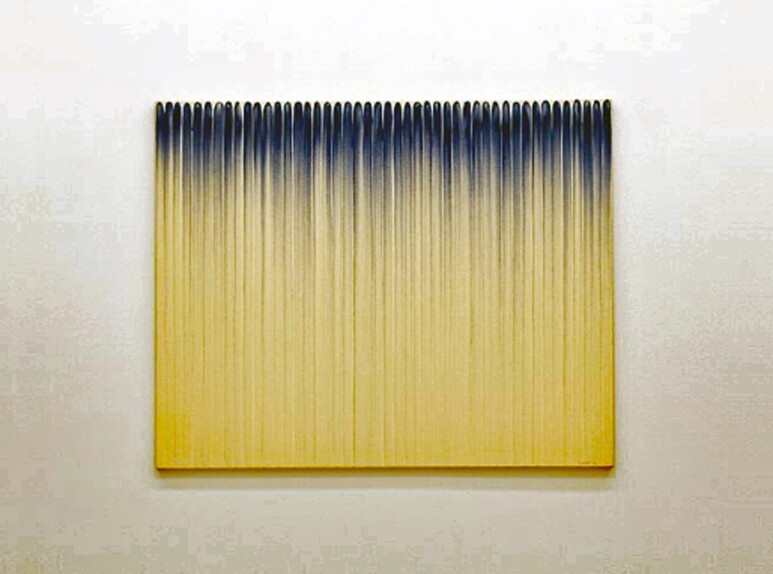Abstract Art Review: Contemporary Art Abstract Art Review/ Contemporary Art Review Louis Choi Chul-joo Exhibition Docent (Contemporary Art Abstract Review Louis Abstract Art Review) Louis Art Theory Presentation 9-1/ Louis Docent: Lacan's Art Theory Presentation 9-1
Louis Chul-joo Choi, the abstract artist who actualizes Lacan's art theory/
Contemporary Art Writer, Contemporary Painter & Contemporary Abstract Artist Louis Contemporary Art Review/ Contemporary Art Abstract Painting Art Review: Lee Woo-hwan <From the Dot> & <From the Line>

Lee Woo-hwan, From Line, 1976. Image Source: Busan Museum of Art
Lee Woo-hwan <From the Dot> & <From the Line>
Lee Woo-hwan does not judge the difference expressed according to the position, but neatly rearranges and reveals the shape obtained <from the dots>.
The form emerges the desire of the object to think by objectifying reality as a realistic existence through the movement of the re-presented sign unconsciously.

Lacan’s desire refers to the meaning of the object by substituting reality with other signs without comparing reality with objects.
This is the semantic function of the object of thought, and the subjects of the unconscious desire and tied together and connected in a sense.
Here, the meaning is metaphorical in a publicly structure so that the meaning of reality is presented as a retroactive effect and the meaning hidden in the form can be obtained.
Revisiting reality in "From the Line" is a dots of time and an image of the line.
The image is identified with the meaning, so the subject of reality forms an imaginary identification relationship with the symbolic self as a mirror image.

Lee Woo-hwan, From Dot, 1974. Image Source: Busan Museum of Art
This constitutes an image of the structure of the composition in which the subject of reality leads to the meaning through the symbolic meaning revealed in <From the Line>.
The image forms the shape of a line that shows the direction as a residue after connecting the dots that determine the place of meaning through the circular movement of symbolic identification.
Although the form cannot be concluded because the lines do not form the boundary of the combined side, it becomes a creation with pictorial value by presenting the margin in a specific place.
The margin is a landscape covered by a combination of realistic dots and semantic lines.
And the landscape is not an object of reality, but an image that makes the meaning of hiding desire.
As Lee Woo-hwan limits his drawing of forms from lines to re-presenting images rather than semantic creation, the image does not constitute a space of the future where he can stop in reality and experience the meaning of desire, and one plane drawn at the center different from the shape of the dot and line appears to be a mathematical Shape.

Write. Louis Chul-joo Choi, Contemporary Art Critic (Abstract Painter & Doctor of Culture Design)



